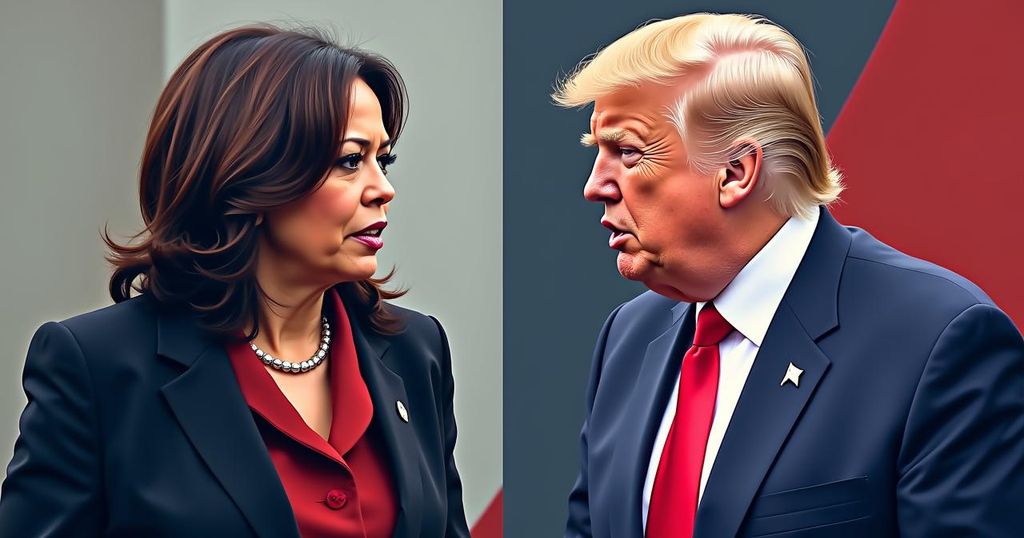Contrasting Campaign Strategies: Harris’s Robust Ground Game vs. Trump’s Focused Outreach

In the final weeks of the 2024 election, Vice President Kamala Harris and former President Donald J. Trump are employing distinct approaches to voter mobilization. Harris’s campaign utilizes a large-scale, traditional field operation focused on widespread voter engagement, while Trump’s campaign targets a smaller, less frequent voter base with inexperienced outside groups. This divergence in strategies may influence their effectiveness as they strive to secure votes in critical battleground states.
As the 2024 election approaches, Vice President Kamala Harris and former President Donald J. Trump are employing markedly different strategies to secure votes in critical counties. Harris’s campaign is deploying an extensive and traditional field operation, characterized by an abundant presence of paid canvassers dedicated to maximizing voter turnout. In contrast, Trump’s team is focusing on a narrower segment of infrequent voters, relying heavily on outside groups that, although well-funded, lack substantial experience in electoral campaigning. In pivotal counties such as Erie County, Pennsylvania; Kenosha County, Wisconsin; Maricopa County, Arizona; and Cobb County, Georgia, interviews with over four dozen stakeholders—including voters and campaign aides—highlight a disorganized Republican initiative that raises questions about its efficacy when juxtaposed with the more cohesive Democratic efforts led by Harris. Reports indicate that Democrats are currently surpassing Republicans in terms of paid staffing and outreach activities, aiming to penetrate a convoluted media landscape and engage apathetic voters. Dan Kanninen, the Harris campaign’s director for battleground states, articulates the necessity of localized engagement, stating, “The national discourse kind of falls on deaf ears if it doesn’t feel real and localized. Ultimately you’re trying to have a cohesive conversation with a voter across many modes to connect the dots.” With every vote in the seven critical battleground states holding significant weight—potentially filling a college football stadium—the urgency to mobilize supporters is paramount. Harris’s campaign boasts an infrastructure of 2,500 staff members across 353 offices, diligently working to convert enthusiastic supporters into volunteers while courting moderate Republicans and independents. As an illustration of their grassroots efforts, the campaign reported impressive statistics of over 600,000 doors knocked and more than three million calls made through 63,000 volunteer shifts in the recent week alone.
The 2024 election landscape is highly competitive, with both parties vying for the crucial swing states that will determine the outcome. Vice President Kamala Harris represents the Democratic approach, characterized by a seasoned, well-structured campaign designed to engage and mobilize voters extensively. Meanwhile, former President Donald Trump’s campaign appears to be operating with less cohesion, focusing on reaching a specific demographic of voters and depending on external groups that may lack the requisite electoral expertise. These contrasting strategies highlight differing philosophies regarding voter mobilization and engagement in contemporary political campaigns.
In conclusion, the strategies deployed by Vice President Kamala Harris and former President Donald J. Trump in the lead-up to the 2024 election reflect fundamentally different approaches to voter outreach and engagement. Harris’s reliance on a proven, extensive field operation contrasts sharply with Trump’s narrower focus, raising questions about efficacy and reach. As the election nears, the success of each strategy will play a pivotal role in determining the electoral outcome in key battleground states.
Original Source: www.nytimes.com







